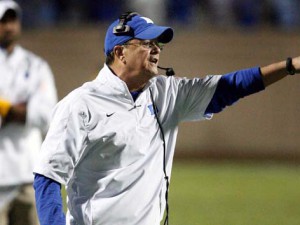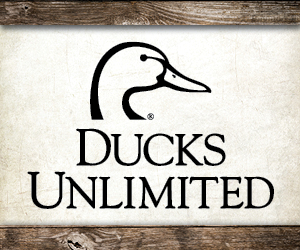
David Cutcliff has Duke's football program heading in the right direction. (Mark Dolejs-US PRESSWIRE)
If coaches are judged by wins and losses, what criteria do we use to judge the programs they lead?
Athletic department commitment, quality of facilities, chance of winning, and, of course, salary for the coach and his staff, are all applicable answers to this question.
If a coach does not have all of these elements to his liking, the school’s athletic director will hear about it. If the AD does not get the backing of the university and negotiate a new contract for the head coach and his staff, or does not show the ability to get donors to fund facility enhancements, that coach will leave for greener pastures if he is good.
A coach’s salary is an indicator of all the other elements. If he does not have a competitive salary with his peers, the facilities are also likely lacking, as well as the opportunity to keep a good staff, which affects the chance to win.
Here are the top five coaches who fall into the category of being underpaid and deserving more. They can also be viewed as coaches who are providing their university the opportunity to get the bang for its buck.
1. Kevin Sumlin, Texas A&M: He is in his first year, and things are looking up — way up — after last week’s upset win over No. 1 Alabama in Tuscaloosa. He is not going anywhere. But he is underpaid, given the Aggies’ success this season and how he rates with others in his conference. The $2 million he will earn this season is only more than Arkansas interim John L. Smith ($800,000), Kentucky’s now-fired Joker Phillips ($1.75 million) and Tennessee’s on-the-hot-seat Derek Dooley ($1.8 million). Yep, the least-paid coaches in the SEC are not likely to be on the sideline next season. Sumlin is, indeed, a bargain.
2. David Shaw, Stanford: Since it is a private school, Stanford does not release its salary figures. Reports suggest that Shaw earns in the neighborhood of $1.75 million annually, which puts him in the bottom half of the Pac-12. Shaw is only 40, but he has proven his worth in the post-Jim Harbaugh era at Stanford. Shaw is 19-4 overall and 14-2 in the Pac-12 in his two seasons in Palo Alto.
3. Mike Riley, Oregon State. Before the season started, this would not be a good argument. Oregon State was 8-16 in the previous two seasons. But the Beavers are one of the surprises of college football at 7-2, and Riley’s track record over 12 years indicates he deserves a better salary. He reportedly is earning nearly $1.4 million in base pay with a maximum bonus of $360,000. His base pay is only more than embattled Jon Embree at Colorado in the Pac-12. Embree’s salary is $750,000, but he does have a max bonus of $1.4 million.
4. David Cutcliffe, Duke: In his fifth season with the Blue Devils, Cutcliffe is no stranger to success and has the program headed in the right direction. Cutcliffe reportedly has a contract worth $1.75 million annually, which puts him behind at least seven other coaches in the ACC. He has the distinction of coaching both Manning brothers in college (Peyton at Tennessee as an assistant and Eli at Mississippi as the head coach). Rumors are circulating that Tennessee is interested, given his background there.
5. Dabo Swinney, Clemson: The Tigers signed him to an extension in July that will pay him about $1.965 million annually. That still puts him behind most of the ACC coaches, including the heavy-hitters like Florida State’s Jimbo Fisher ($2.75 million), Georgia Tech’s Paul Johnson ($2.4 million) and Virginia Tech’s Frank Beamer ($2.4 million). He has the Tigers 9-1 overall and No. 11 in the BCS standings. If Clemson lands in a BCS bowl, expect that contract to be reworked again.

